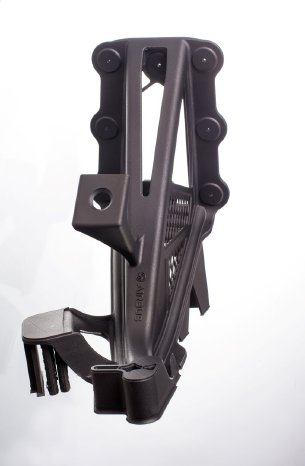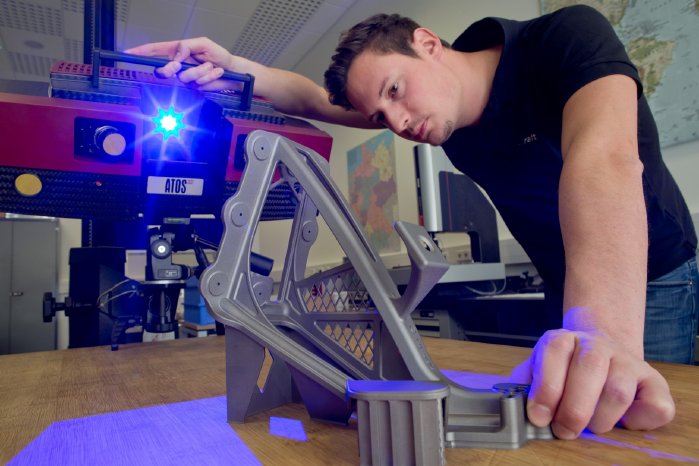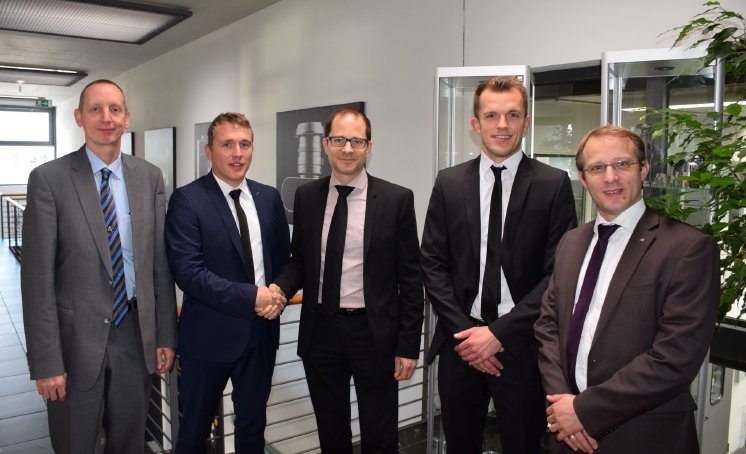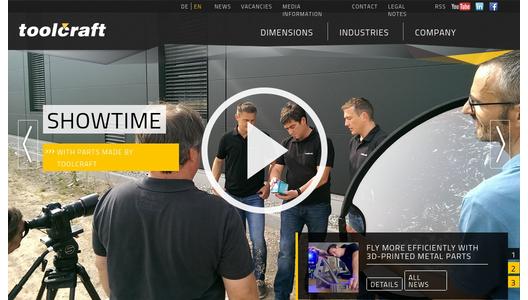Technology of the future
Until now, components have been milled or turned from a single piece of metal. Since the component is fashioned by the removal of material, construction is clearly restricted. Hollow cavities or honeycomb structures inside the component are impossible. For aircraft, this means additional weight, one consequence of which is higher fuel consumption. During the additive manufacturing process, a part is built up layer by layer. The laser melts the material concerned in powdered form. The construction data for the component is divided into cross sections, which are then built one by one on top of each other during the melting process, resulting in the final, complete part. In this way, the component is built up in a 3D manner.
A giant leap forward
The advantages of 3D printing are obvious: the manufacture of complex components, the processing of difficult materials and the rapid production of parts with very little waste. This new technology can revolutionise entire processes and save costs in many areas. ‘While previously, a tool mould and additional manufacturing steps such as pressure casting were needed to manufacture a new component, we can now construct this directly in a metal powder bed’, says Christoph Hauck, managing director of Toolcraft. ‘This makes it possible to produce individual parts faster.’ In addition, machine manufacturers are increasingly investing in automation in order to make the process as well as the post-processing of parts more efficient.
A varied material basis
Advancements in research are also being made with regard to materials. In this regard, Toolcraft has recently begun to process the high-strength aluminium alloy Scalmalloy® of the company Airbus APWorks. One of its qualities is that it is more than twice as strong as the aluminium silicon powder currently in use. This makes Scalmalloy® an excellent choice for high-performance applications in aircraft. When selecting the raw material, the company uses its expertise in materials and manufacturing to meet the specific needs of the customer. At Toolcraft, nickel-based steel and titanium alloys as well as high-grade and tool steels are used. In this way, the entire process chain can be provided in-house, from construction and manufacture to post-processing and tactile and optical measurement. Toolcraft also has facilities for the non-destructive testing of surfaces, which comply with NADCAP requirements.
Lightweight aircraft parts
Toolcraft makes housing components and complex, thin-walled structures for gas turbines for the aerospace industry. The first 3D-printed components have recently started to be used on board aircraft, allowing them to fly more efficiently. Premium AEROTEC is the leading partner for the use of this technology in aeroplane manufacturing. The company signed a cooperation agreement with Toolcraft in 2015. The partners want to bring their expertise and experience together in order to drive forward the development of aircraft components using the metal laser melting process. This includes both the manufacture and quality assurance of the powder as well as the production and post-processing of parts. Toolcraft’s role in this partnership is to provide its expertise in order to offer all-in-one solutions for the serial production of 3D-printed metal parts.




